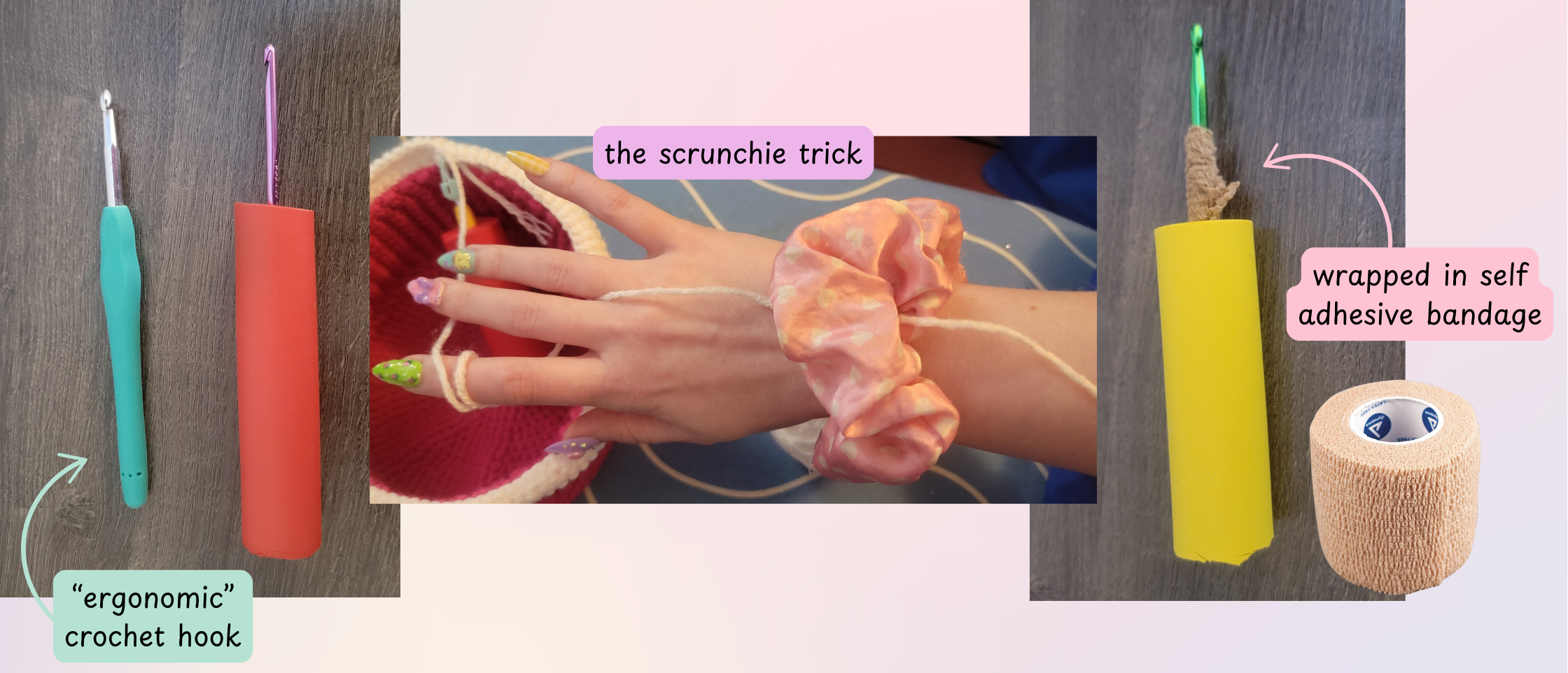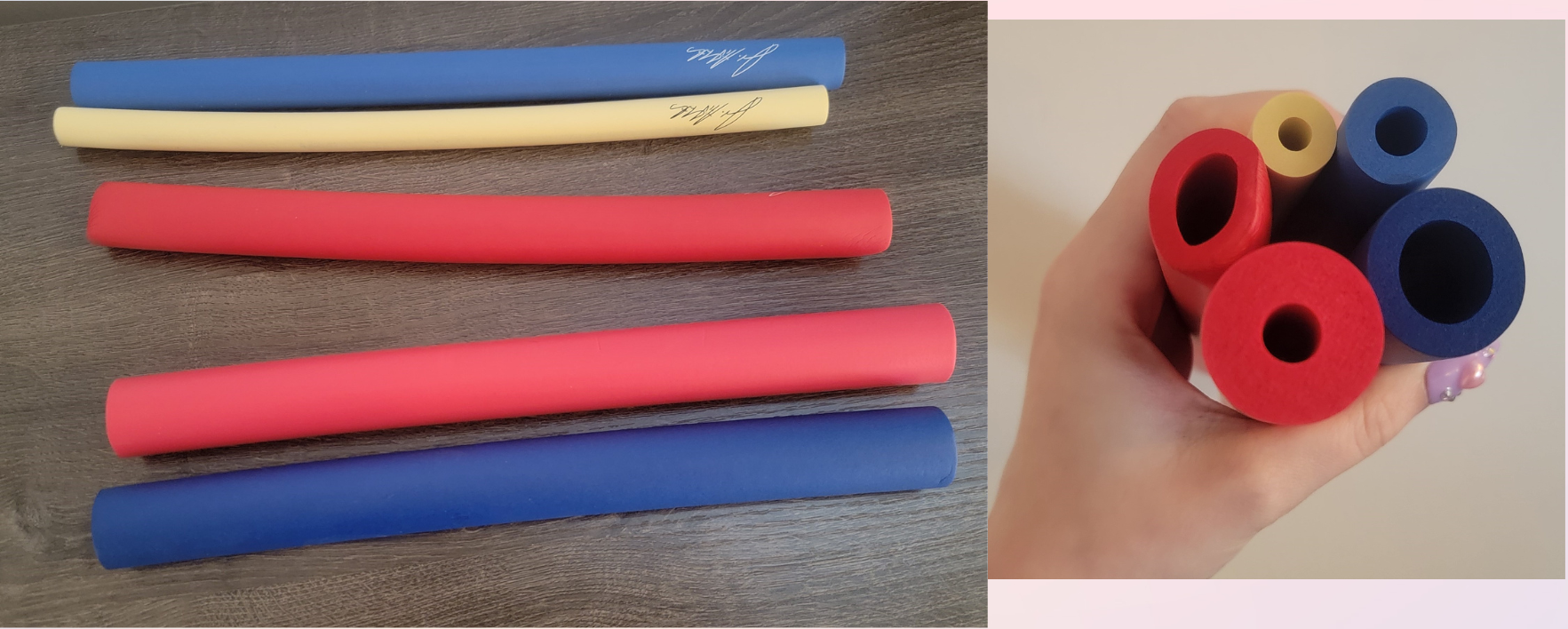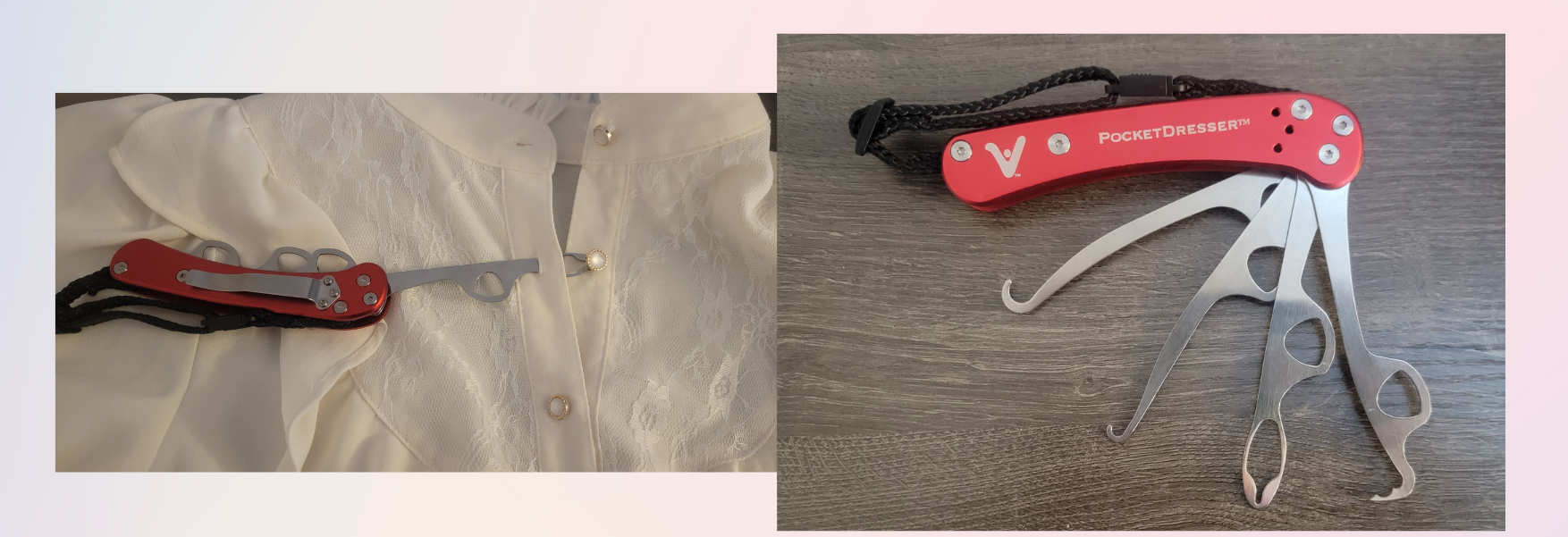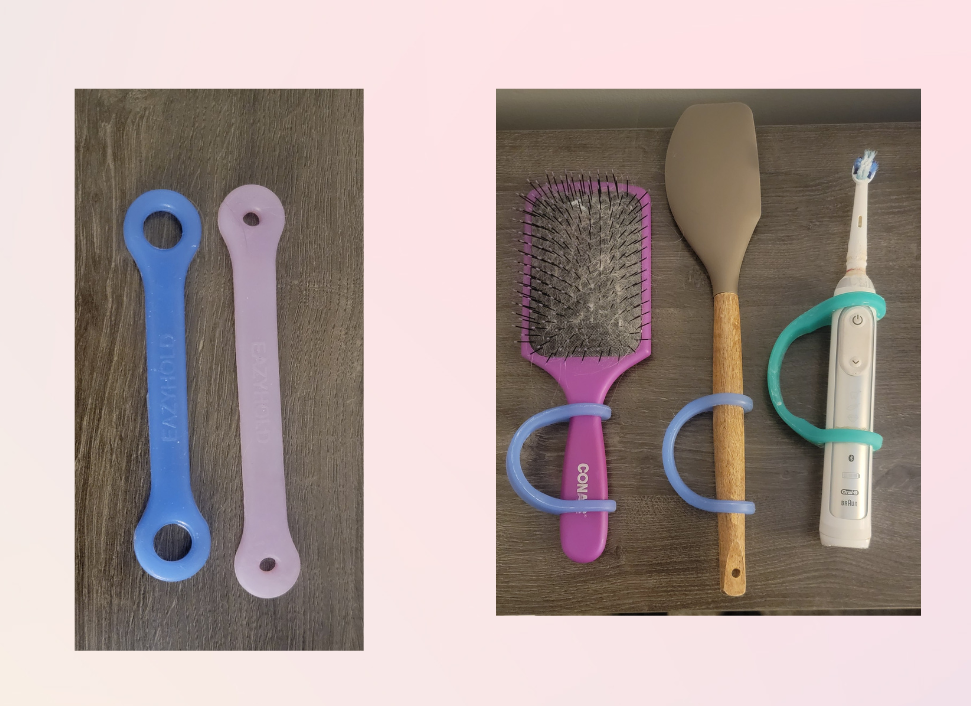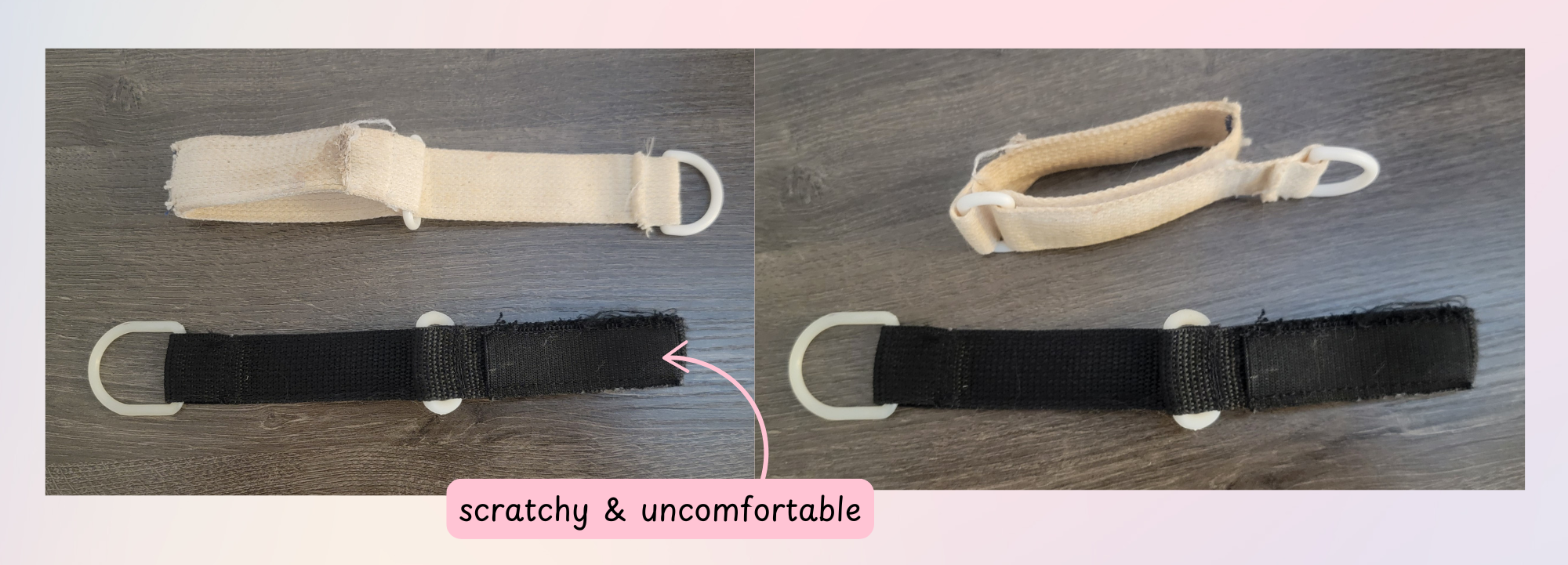My Favorite Adaptive Tools
Being disabled can make things awfully difficult. but what is perhaps more difficult is finding adaptive tools to make those difficulties easier. The unfortunate truth is that when you search for the adaptive tool to suit your needs you may spend hours trying to find it. In this post I want to share with you some of my favorite adaptive tools that I have found over the last few years while adapting to my own disabilities.
Chronic illness and disability force us to give up a lot of the things that we love and enjoy. For me that includes things like being able to work a “ normal” job, Olympic style fencing, being able to leave my house for social activities and even driving. Over time I have become particularly stubborn when it comes to giving up anything else, so I have scoured the internet and worked with occupational and physical therapists to find adaptive tools and techniques that will help me continue my hobbies.
I know there are a lot of people out there cough insurance, who think that being chronically ill and disabled means you should basically be on your deathbed which also means having very little joy in your life. I'm here to tell you that's wrong and I have many many doctors and therapists who will always encourage maintaining hobbies, which help the social - physical - emotional cycle that is pain, whatever form that may take.
For myself, I work with weakness in both my hands and legs, involuntary movements, also in my hands and legs, cognitive processing issues, numbness and everyone's worst enemy, fatigue. Even though this is the “ shortlist” I hope it paints a picture for the adaptive tools and techniques I will be talking about. Everyone has different needs even if our symptoms are similar, but at the very least I hope this gives you a starting point so you can find your own solutions and help maintain a better quality of life for yourself.
First and foremost is the most important and most difficult thing for all of us and that is pacing. It may not be something you want to hear but no adaptive tool is going to serve you better than figuring out your own pacing. Fatigue is the most common and often the most debilitating symptom for those of us who are chronically ill, which means we have to adapt our lifestyles so we don't overdo it. Dr. Anna Hayburn and Dr. Robert Wilson of the Cleveland Clinic Autonomic team will also tell you that if you continually push yourself instead of pacing you will only make things worse for yourself. You're taking one step forward to get things done but you're taking three steps back in regards to your health. Sure you were able to clean the entire house today but now you're going to end up in bed for the next 3 days ( as an example ). However, if you pace yourself you're less likely to end up in a flare, which also means you'll be able to continue taking those baby steps forward to make improvements in your quality of life.
Pacing looks different for everyone, after all we all have different needs. In my case, while I am fortunate enough to have far too many hobbies, my condition means that I can only do these hobbies for 1-2 hours at a time. Don't get me wrong it took me a long time to figure out how exactly to work with my body and there were many times that seemingly out of nowhere I was on the verge of passing out (thanks pots). The system that has been working for me consists of limiting the amount and time of an activity every day as well as incorporating plenty of breaks. For instance, I may sit on the floor to cut pattern pieces for sewing, knowing that it is more physically demanding, what with leaning over, maybe having to get up and down a few times, tracing the pattern, then cutting the fabric itself. I will always decide on a stopping point ( like cutting out the front and back panels of a jacket plus its lining) knowing that I still need to listen to my body in case I have to stop early. As hard as it may be, taking breaks in between activities is more important than you realize. A break can be something as simple as watching an episode of a show or meditating for 5 to 10 minutes. afterwards I will switch to an activity that relies on different parts of my body than whatever I did before, Crochet and sewing with a sewing machine demand different levels of dexterity and involve different muscle groups even though they both require the use of my hands.
I don't want to go on too long about pacing, but if anyone is interested in more information or how I approach pacing feel free to let me know and we can do a blog post or video focusing on pacing itself. Even writing this post requires pacing and breaks because it is more cognitively demanding then I would have thought.( I only say this because pacing comes up everywhere and even a simple task can be more demanding on your body than you think).
As many of you know, I am an avid crafter with far too many hobbies. After chronic illness forced me to give up fencing, I became more and more defiant of giving up any other hobbies, my seemingly last bits of joy. I worked endlessly with my physical therapy, occupational therapy, & speech therapy to find solutions so I could continue the things I enjoy so much.
Crochet:
Crochet is far more forgiving than knitting (which I had to give up years ago) making it far easier to continue and adapt. The most important adaptations I use are foam tubes that go over the handles of my crochet hooks and a scrunchie on my wrist. I recommend using hooks that are “ergonomic”, basically they have larger grips on the handles, not just the straight hook. The scrunchie, strange as it sounds, holds the yarn for me so I’m not gripping it in curled fingers. Of course taking breaks and stretching are also important, so don't forget about those too😉.
I also want to note that the foam tubes can put on writing utensils too. I like to use them for my digital art pens, and ink pens that I can get to fit. The tubes come in multiple sizes and you can use things like self adhesive bandages to bulk up the item so it fits in the tube.
Sewing:
I do most of my sewing by machine which is surprisingly less dexterously demanding than you think. The most difficult part I would say is pulling and placing pins. Much of my OT exercise actually focuses on simply placing and pulling pins through various types of fabric.
Utilizing the lateral pinch is very helpful, but you can also use a seam ripper to hook that ball of the pin & pull it out more easily. .
Now, this next “trick” is going to sound very weird and might just be a me thing, but I feel like it's worth mentioning. I wear press on nails of medium length which help me grab things more easily. I know that sounds like it doesn't make a lot of sense, but the nails allow me to “hook” onto the balls of pins or even clothes when I’m getting dressed.
I have also found I am able to do some hand beading in small amounts; the fine needles used for beading glide through fabric very easily resulting in minimum resistance and pulling. I usually wrap the thread around my finger to pull if needed. As far as holding the needle, you really only need a gentle pinch and a bit of patience while you go in and out of the project to get the right spot.
Keep in mind that doing things with larger muscles is generally easier than trying to use fine motor skills. Instead of using your fingers to grab thread (for example) use ergonomic pliers; you ultimately use your entire hand instead of your fingertips. Similarly, you can carry things with your forearms instead of your hands if you have weaknesses similar to myself. Even lifting your coffee cup by sliding your hand through the handle is using muscles in your arm instead of your hand, though be careful not to overwork your wrist.
Dressing & Self Care:
I like fashion a lot, and though I have had to alter what I wear, I still try to keep the fashion I enjoy. I’m not able to wear jeans anymore, swapping my summer shorts for those with elastic waists. Plus, I often have help from my husband with some buttons and zippers, but I still have tools I can use when we go out or if I’m home by myself.
I have a nifty dressing tool from amazon which has a zipper pull and button “helper” (I'm not sure what to call it). These help with fine motor skills and weakness when it comes to gripping a zipper pull or fastening buttons. The button tool has a limited size range, but I find it fits most buttons on my clothes. When undoing buttons, I’ve found success in pushing down an edge of the button so it slips into the hole, though this is very dependent on the garment and button hold size (larger button holes make it easier). Any jewelry I have has been switched to elastic (bracelets), clip on earrings, and simply asking for help if I want to wear a necklace.
When it comes to brushing my hair or teeth, I have these great silicone straps that slip on my toothbrush, hairbrush handle, and even cooking utensil handles. Much like the coffee cup example from before, just slip your hand in and now you can use your arm muscles instead of those pesky hand muscles. These straps can also be placed on a long handled brush for washing your body too. Plus, they come in a variety of sizes, so you can use them for all sorts of things.
Generally speaking, I find it easier doing something that requires a light grip. When I do makeup, I don't need to grip the brush or use the same pressure like I would a pen. Not to mention makeup brushes are already larger and easier to grip, but you can also use the foam tubes for a lil extra help when you need.
Food n Stuff:
I tend to gravitate to finger foods since they are easier to eat (not requiring utensils). But, I highly recommend a utility cuff. Simple yet effective it holds the utensil so you just have to use your hand not your fingers to hold whatever utensil you need. My only caution is that not all utility cuffs are made equal, some are incredibly uncomfortable because of the material they are made of. I will be working to design one that is more comfortable, so keep an eye out for that 😉.
Fatigue tends to result in more caffeine and I love my soda pop as much as the next. I use this nifty tool to open can tabs and even pull back the seal on coffee creamer and some other bottles. The one I got on amazon also came with a separate tool for twisting caps off, though it has a limited size range.
These are my favorite adaptive tools, I use almost every day. I know this was long, but I hope it has helped whether you’re able to use the same techniques or it simply directed you to a different idea better suited to you. Disability is an extremely vast spectrum which means we need a vast amount of solutions to maintain a satisfactory quality of life. We have a long way to go but I know if we continue to share ideas and experiences we can make progress. I’d love to hear about other tools or techniques you use too.
Let’s defy disability together!
This post was written with the assistance of Google talk to text.
I am not affiliated with any of the item links and will not get any kind of payment by clicking on them. They are for reference since these items can be hard to search for.


